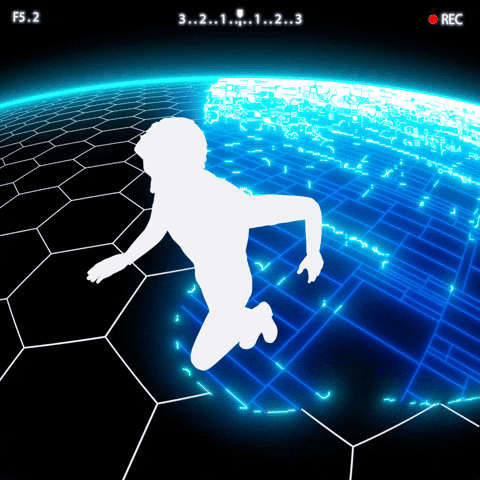Mute Buttons and YouTube: The Unexpected Heroes of Pandemic Teaching
Impact of Web 2.0 During the Pandemic: How Tools like Nearpod and YouTube Became Essential for Remote Learning
Note: FIRST! THANK YOU FOR FOLLOWING ALONG WITH US AT THE TEACHING LAB!
These past few years have shown us one undeniable truth: regarding remote learning, tech tools aren’t just a “nice-to-have” but an “absolutely need to survive.”
Teachers had to think on their feet, often with a YouTube tutorial in one hand and a cup of lukewarm coffee in the other. The rapid adoption of platforms like Nearpod and YouTube wasn’t just about keeping students awake (though that was a win, too). It was about ensuring that learning didn’t hit a complete standstill.
Without the tech-savvy scramble, we’d probably have more kids playing Minecraft than attending virtual math class. So, let’s explore how these Web 2.0 tools kept us afloat during the pandemic and set the stage for a tech-savvy future in education.
If you missed the last articles, you can find them here. Enjoy:
The COVID-19 pandemic transformed education systems across the globe, forcing teachers, students, and administrators to pivot rapidly to remote learning environments. The seismic shift from traditional in-person classrooms to entirely virtual platforms underscored the critical role of technology in modern education. As schools shuttered and classrooms went online, Web 2.0 tools like Nearpod and YouTube emerged as lifelines, keeping students engaged, connected, and actively learning despite physical separation.
The Rise of Web 2.0 Tools in Education
Web 2.0 refers to the interactive and collaborative nature of the Internet, where users can consume content and create, share, and interact with it. Unlike the early Internet, which was primarily static, Web 2.0 is dynamic, allowing for real-time collaboration and engagement—key elements that became indispensable during the pandemic. According to Coman et al. (2020), educators adopted Web 2.0 tools at an accelerated rate to address the challenges of remote teaching, using them to create more interactive and engaging content.

Before COVID-19, digital tools like Nearpod, YouTube, Kahoot!, and Google Classroom were supplemental resources used by innovative educators to enhance student learning. However, the pandemic accelerated their adoption, making them foundational components of the new remote learning landscape (Dhawan, 2020). These platforms allowed educators to create interactive lessons, facilitate discussions, and foster community, even when students were miles apart.
Nearpod: Enhancing Interactivity and Student Engagement
Nearpod was one of the standout tools that gained significant traction during the pandemic.
This interactive presentation platform allowed educators to transform traditional lessons into engaging digital experiences. With its live quizzes, polls, virtual field trips, and collaborative boards, Nearpod enabled teachers to deliver lessons that kept students actively participating rather than passively consuming information.

The platform’s integration with Zoom and Microsoft Teams further streamlined remote instruction.
Teachers could present lessons while interacting with students, creating an almost seamless transition from physical to virtual classrooms. When students were dealing with isolation and screen fatigue, the interactive features of Nearpod helped to re-engage them, making learning feel more hands-on and less monotonous (Ferdig et al., 2020). As Coman et al. (2020) noted, using technology to increase student engagement was critical in maintaining learning outcomes during remote instruction.
YouTube: The Power of On-Demand Learning
While platforms like Nearpod excelled in interactivity, YouTube was a vital tool for delivering content on demand.
The platform, a staple for educational content for years, became an indispensable resource during the pandemic. Teachers leveraged YouTube to upload pre-recorded lessons, tutorials, and explainer videos that students could access anytime, providing flexibility for learners juggling home life and schoolwork.
One of YouTube's key benefits was its scalability; it allowed educators to reach hundreds, if not thousands, of students with a single video.
YouTube's asynchronous nature also accommodated diverse learning needs and schedules, mainly for stIt was used in different time zones or those with unreliable internet connections (Dhawan, 2020). Using multimedia content on YouTube enhanced comprehension and retention, making it a versatile tool for remote learning.
Accelerated Adoption of Technology in Education

The sudden shift to remote learning was a crash course in technology adoption for many educators, students, and parents.
Before the pandemic, schools often needed more budgets, were resistant to change, and had a lack of digital literacy among staff. However, the necessity of remote education forced schools to adapt quickly, leading to a surge in the use of educational technology.
According to a survey by Ferdig et al. (2020), 77% of educators reported increasing their use of digital tools during the pandemic, with Web 2.0 platforms like Nearpod and YouTube topping the list.
Moreover, the crisis highlighted the inequities in digital access, prompting schools and governments to invest in technology infrastructure and teacher training at unprecedented levels. The result was a dramatic shift towards a more tech-integrated approach to education, a trend likely to continue in the post-pandemic world.
The Lasting Impact of Digital Tools on Education
The pandemic’s acceleration of technology adoption has left a lasting imprint on the education sector.
The use of Web 2.0 tools like Nearpod and YouTube has changed not only how teachers deliver content but also how students engage with it.
The digital skills gained during this period—both for educators and students—are invaluable as schools integrate technology into their daily routines.
Blended learning models combine face-to-face and digital instruction and are becoming increasingly popular. Tools like Nearpod can still enhance in-class learning, while YouTube videos remain a go-to resource for homework support and independent study.
…FINAL THOUGHTS…
The COVID-19 pandemic was an unprecedented challenge for educators, but it also catalyzed a much-needed transformation in the use of technology in education.
Tools like Nearpod and YouTube proved essential in keeping students engaged, connected, and learning during a crisis. As schools move forward, the rapid adoption of Web 2.0 tools has solidified their importance, ensuring that digital engagement will continue to play a critical role in shaping the future of education.
References
Coman, C., Țîru, L. G., Meseșan-Schmitz, L., Stanciu, C., & Bularca, M. C. (2020). Online teaching and learning in higher education during the coronavirus pandemic: Students’ perspective. Sustainability, 12(24), 10367.
Dhawan, S. (2020). Online learning: A panacea in the time of COVID-19 crisis. Journal of educational technology systems, 49(1), 5-22.
Ferdig, R. E., Baumgartner, E., Hartshorne, R., Kaplan-Rakowski, R., & Mouza, C. (Eds.). (2020). Teaching, technology, and teacher education during the COVID-19 pandemic: Stories from the field. Waynesville, NC: Association for the Advancement of Computing in Education.






